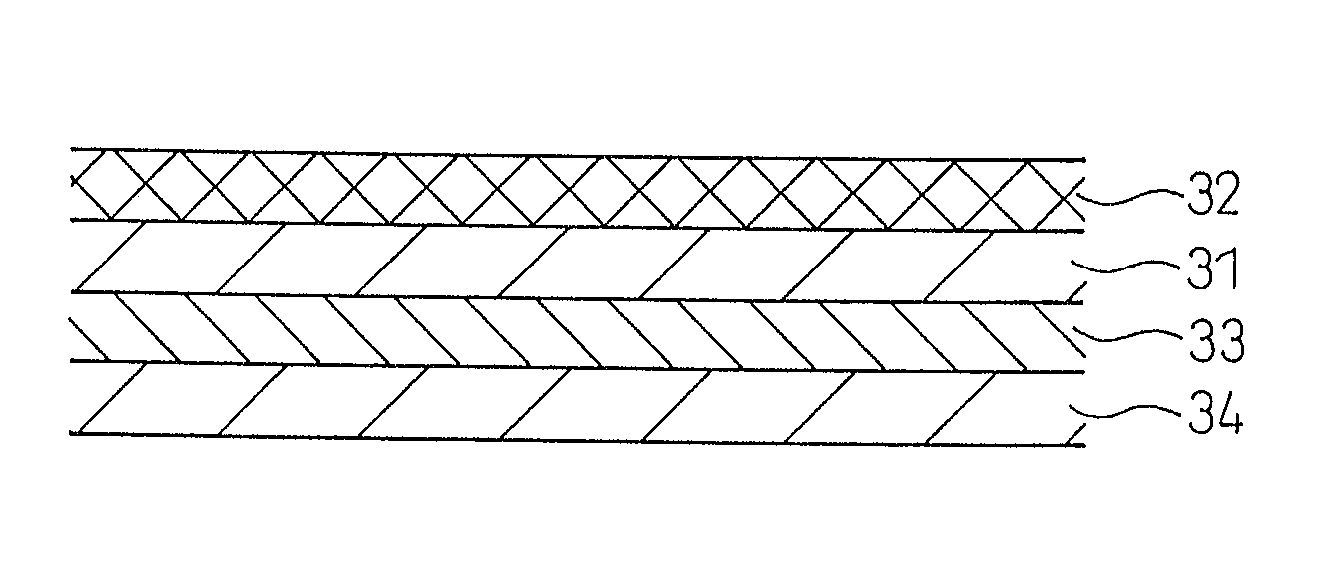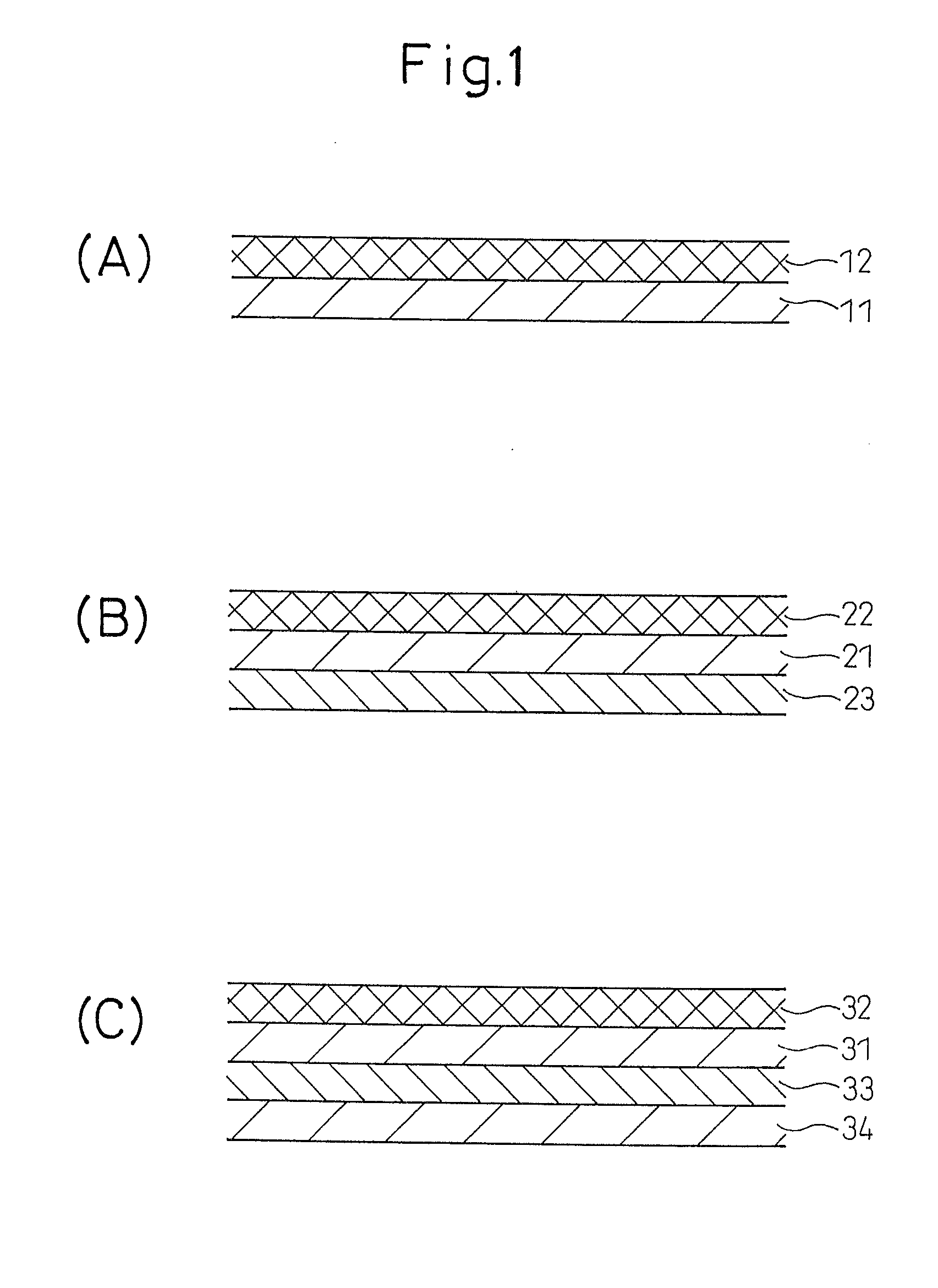Laminate and Method For Producing Same
a technology of laminate and method, applied in the direction of sustainable manufacturing/processing, final product manufacturing, electrochemical generators, etc., can solve the problems of insufficient heat resistance, dimensional stability or mechanical strength, insufficient use, and inability to meet the requirements of use, so as to reduce the production cost of the layer containing an ion-exchange resin
- Summary
- Abstract
- Description
- Claims
- Application Information
AI Technical Summary
Benefits of technology
Problems solved by technology
Method used
Image
Examples
example 1
[0039]A copolymer of ethylene and norbornene “TOPAS® 6015” manufactured by Polyplastics Co., Ltd. was prepared as a release film. A solution (solid content: 20% by mass) of a perfluoropolymer having a sulfonic acid group in the side chain “Nafion® DE2021” manufactured by DuPont was prepared as a solution of an ion-exchange resin. Using a solution flow casting apparatus (control coater K202, manufactured by RK PPTNT COAT INS®TRUMENTS), the above solution was cast on the above release film (size: 21 cm×30 cm, thickness: 100 μm) and the obtained coated film was dried in an oven at 130° C. to form an ion-exchange resin layer (thickness: 20 μm) on the release film.
example 2
[0040]A solution (solid content: 20% by mass) was prepared from a copolymer of ethylene and norbornene “TOPAS® 5013” manufactured by Polyplastics Co., Ltd., as a solution of a release film, in accordance with the method described in Japanese Unexamined Patent Publication (Kokai) No. 2007-112967. A polyethylene terephthalate (PET) film (size: 21 cm×30 cm, thickness: 50 μm) manufactured by Mitsubishi Plastics, Inc. was prepared as a base film. Using a solution flow casting apparatus (control coater K202, manufactured by RK Print Coat Instruments Ltd.), the above solution was cast on the above release film and the obtained coated film was dried in an oven at 130° C. to form a release film (thickness: 0.5 μm) on the base film. Furthermore, a solution (solid content: 20% by mass) of a perfluoropolymer having a sulfonic acid group in the side chain “Nafion® DE2021” manufactured by DuPont was prepared as a solution of an ion-exchange resin. Using a solution flow casting apparatus (control ...
PUM
| Property | Measurement | Unit |
|---|---|---|
| Tg | aaaaa | aaaaa |
| height | aaaaa | aaaaa |
| height | aaaaa | aaaaa |
Abstract
Description
Claims
Application Information
 Login to View More
Login to View More - R&D
- Intellectual Property
- Life Sciences
- Materials
- Tech Scout
- Unparalleled Data Quality
- Higher Quality Content
- 60% Fewer Hallucinations
Browse by: Latest US Patents, China's latest patents, Technical Efficacy Thesaurus, Application Domain, Technology Topic, Popular Technical Reports.
© 2025 PatSnap. All rights reserved.Legal|Privacy policy|Modern Slavery Act Transparency Statement|Sitemap|About US| Contact US: help@patsnap.com



